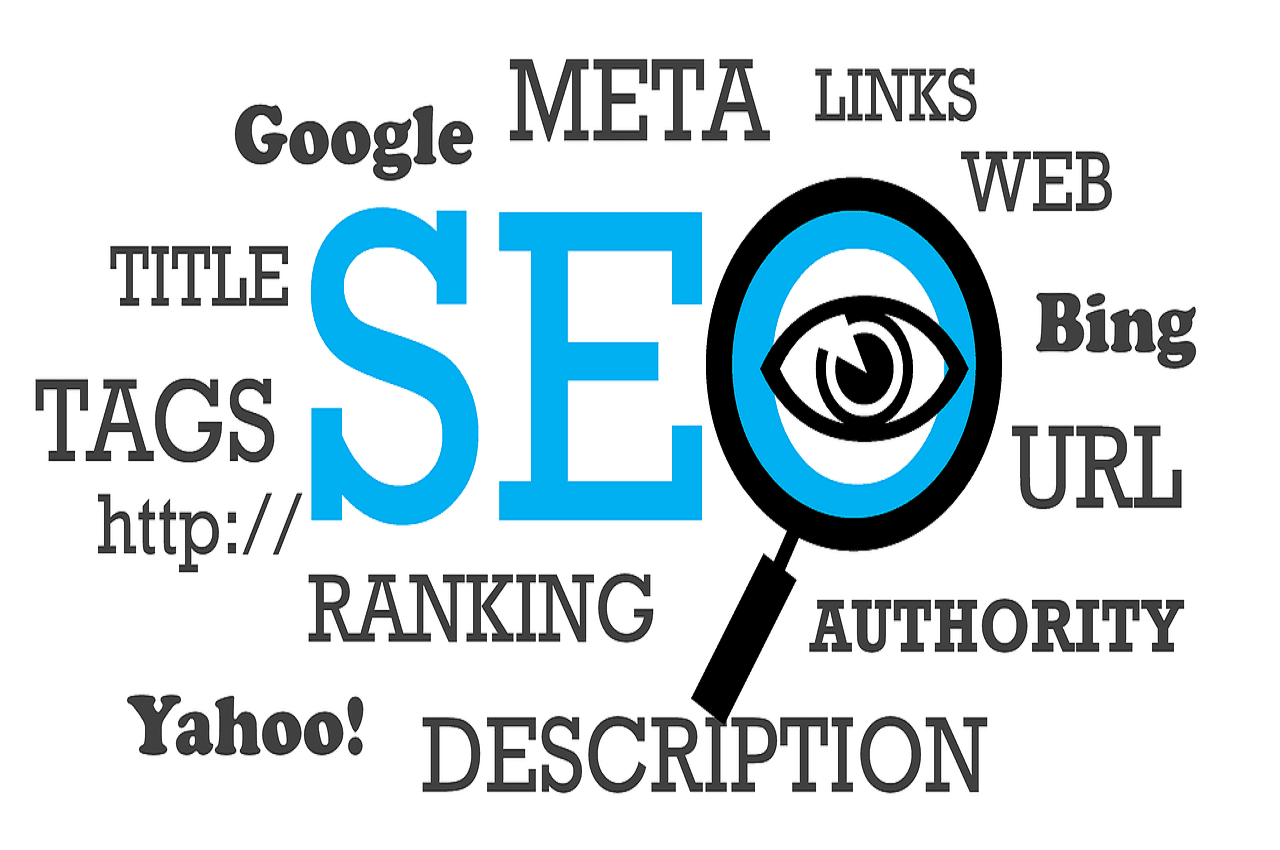Mastering Search and SEO Strategies for Success

In the fast-paced world of digital marketing, using search engines wisely is key for businesses to stand out. Our guide covers the details of search and SEO strategies. It gives you the tools to increase your online presence, attract more organic traffic, and beat your rivals.
This article is for both experienced and new digital marketers. It lays a strong foundation in SEO basics and advanced techniques to boost your online image. We’ll cover everything from SEO’s core parts to advanced link-building strategies. You’ll learn how to improve your brand’s search rankings and grab your audience’s attention.
Key Takeaways
- Gain a comprehensive understanding of the essential elements of modern SEO
- Discover effective strategies for conducting in-depth keyword research to drive targeted traffic
- Learn how to optimize on-page elements for improved search engine visibility
- Explore advanced link-building tactics to build authority and boost search rankings
- Implement technical SEO best practices for a well-optimized website
- Leverage content marketing strategies to enhance your online presence
- Optimize for mobile and local SEO to cater to diverse user needs
Understanding the Fundamentals of Search Engine Optimization
At the heart of any successful digital strategy lies the practice of search engine optimization (SEO). We’ll explore its key components and how search engines rank content.
Key Components of Modern SEO
Effective google seo includes keyword research, on-page optimization, content creation, and link building. These elements work together to improve our online visibility and drive traffic to our digital assets.
How Search Engines Process and Rank Content
Search engines, like Google, use complex algorithms to evaluate web content. By understanding what is seo and how it works, we can optimize our web pages. This increases our chances of ranking higher in search results.
The Evolution of SEO Practices
The world of search engine optimization example is always changing. Search engines update their algorithms to give users the best information. By keeping up with trends and best practices, we can stay competitive online.
Understanding SEO basics is key to unlocking your online potential. By mastering these concepts, you’ll drive more traffic, increase conversions, and achieve success in the digital world.
Essential Keyword Research Techniques for Digital Success
As digital marketers, we know how important keywords are for SEO. Good keyword research helps us reach the right audience and match our content with their needs. We’ll look at key methods to find valuable keywords that boost our online success.
Understanding our audience is key to good keyword research. We need to know what they’re looking for and how they talk. Tools like Google Trends and SEMrush give us insights into what people search for and how competitive it is.
We also need to think about why people are searching for certain things. Are they buying something, looking for info, or just curious? Matching our content to their search intent makes our online presence more relevant and engaging.
| Keyword Research Technique | Description |
|---|---|
| Competitor Analysis | Looking at what our competitors do can show us where we can stand out. |
| Semantic Clustering | Grouping related keywords helps us cover all aspects of a user’s search. |
| Long-Tail Keyword Targeting | Using specific, niche keywords can attract more focused traffic and better results. |
Using these keyword research methods, we can build a strong strategy. This strategy will help us meet our audience’s needs and improve our SEO efforts. It’s a solid way to achieve online success.
Optimizing On-Page Elements for Better Rankings
Exploring on-page optimization reveals key factors that boost your website’s search rankings. We’ll look at how to make your URLs, meta descriptions, and title tags better. These strategies can increase your online visibility and attract more visitors.
Creating SEO-Friendly URL Structures
Your website’s URLs are crucial for how to do seo. A good URL structure makes your site easier to use and search engines to crawl. Use URLs that are descriptive and include your main keywords to help users and search engines understand your content.
Meta Description and Title Tag Best Practices
Meta descriptions and title tags are your website’s first impression in search and seo examples. Writing engaging, informative, and SEO-friendly descriptions and titles can boost click-through rates. By following best practices, you can make a strong first impression and encourage visitors to explore your site.
Content Optimization Strategies
At the core of on-page optimization is optimizing your content. We’ll cover how to use keywords, ensure quality, and make your content easy to read. By matching your content with what users and search engines want, you can improve your rankings and serve your audience better.
| On-Page Optimization Element | Best Practices |
|---|---|
| URL Structure |
|
| Meta Description |
|
| Title Tags |
|
| Content Optimization |
|
By focusing on these key elements, we can improve your website’s search and seo examples and rankings. Remember, effective on-page optimization is key to a successful digital marketing strategy. It sets the stage for long-term success in the ever-changing SEO world.
Building a Strong Search and SEO Foundation
Creating a solid SEO strategy starts with a strong foundation. This foundation is built on two key elements: site architecture and user experience. These parts work together to make your site appealing to search engines and great for your visitors.
First, let’s talk about site architecture. A well-organized website with easy navigation and clear URLs helps you show up in search results. By arranging your content in a way that’s easy for everyone to follow, you help both search engines and visitors understand your site better.
Next, user experience is crucial in today’s online world. A site that is engaging, fast, and easy to use can greatly improve your search rankings. Search engines favor sites that offer a good user experience because happy visitors are more likely to come back.
Investing in a good site architecture and a user-friendly user experience sets the stage for success in your search and SEO course. This foundation boosts your search visibility and builds a loyal audience, leading to more traffic and sales.
Keep in mind, a strong SEO foundation is an ongoing effort. It needs regular updates to keep up with search engine changes and user preferences. By always improving your site’s architecture and user experience, you stay ahead in the fast-paced world of SEO.
Advanced Link Building Strategies for Authority
Link building is key in SEO for your website’s authority and trust. We’ll look at advanced ways to get high-quality backlinks. These can boost your rankings and bring in more visitors.
Quality Backlink Acquisition Methods
Building a strong link strategy is more than just getting lots of links. We aim for quality backlinks from trusted, relevant sites. Some good ways include:
- Outreach and guest posting on top blogs in your field
- Using broken link building to find new opportunities
- Joining online communities and forums related to your niche
- Working with other businesses for joint marketing
Understanding Link Equity and Domain Authority
Link equity, or link juice, is vital in SEO today. We check the SEO value of potential backlink sources. We look for sites with high domain authority to link to yours. This can greatly improve your site’s authority and search visibility.
Avoiding Common Link Building Mistakes
Link building is a strong SEO tool, but some methods can hurt your site. We warn against paid link schemes, low-quality directory submissions, and too much link exchange. These can get you penalized and harm your SEO efforts.
By learning advanced link building, you can increase your site’s authority. This will attract more organic traffic and help you stand out from competitors in the SEO world.
Technical SEO Implementation Guide
In the world of search engine optimization (SEO) and accessibility, knowing technical SEO is key. This guide will cover important technical SEO aspects. These can greatly improve your website’s search performance and visibility.
Site speed optimization is a foundational element of technical SEO. A fast website is good for users and your SEO search ranking. You can make your site faster by optimizing images, using caching, and reducing server times.
Mobile-friendliness is also crucial. With more people searching on mobile, making your site mobile-friendly is essential. Use responsive design, optimize content for mobile, and ensure a smooth experience on all devices.
Using structured data is another effective technical SEO tactic. Schema markup helps search engines understand your content better. This can lead to better search result snippets and higher visibility in search engine optimization and accessibility.
Ensuring your website is crawlable is also key. Make your robots.txt file optimal, submit sitemaps, and fix any issues that block search engine crawlers. This can improve your website’s discoverability and indexation, boosting your SEO search ranking and keyword tool performance.
By following these technical SEO best practices, you can set a strong foundation for your online success. This will improve your website’s search visibility, user experience, and overall performance.
| Technical SEO Aspect | Key Strategies |
|---|---|
| Site Speed Optimization |
|
| Mobile-Friendliness |
|
| Structured Data |
|
| Crawlability |
|
Content Marketing Strategies for Enhanced Visibility
In today’s fast-paced digital world, content marketing is key for businesses. It helps them get noticed online and connect with their audience. We’ll look at strategies that work well for both content marketing and SEO.
Creating Value-Driven Content
Good content marketing starts with creating content that adds value. We need to know what our audience wants and needs. This way, we can make content that really speaks to them.
This approach not only boosts our search rankings. It also builds trust and engagement with our customers.
Content Distribution Channels
After creating valuable content, we need to share it. Using different channels like social media and email marketing helps us reach more people. By using SEO strategies, we can make our content even more effective.
Measuring Content Performance
- Tracking important metrics like traffic and engagement helps us see how well our content is doing.
- By looking at this data, we can improve our content marketing. We can find out what works best and make our online presence stronger.
| Content Marketing KPIs | Importance for Search Visibility |
|---|---|
| Organic Traffic | Shows how well our content attracts the right audience and boosts our search rankings. |
| Engagement Metrics (e.g., time on page, bounce rate) | Shows how good and relevant our content is, which search engines care about. |
| Conversion Rates | Shows our content can lead to actions like getting leads or making sales, which helps our business grow. |
By using these content marketing strategies with a smart approach to search marketing and SEO, we can make our online presence shine. This helps us stand out in the changing world of search.
Mobile Optimization and User Experience
In today’s world, mobile devices are key. Making your site mobile-friendly and ensuring a great user experience (UX) are crucial for SEO success. We’ll look at strategies to keep you ahead and engage your audience on all devices.
Responsive design is a big part of mobile optimization. It makes sure your site looks good on any screen size. This makes your site easy to use and tells search engines it’s mobile-friendly, which can help your rankings.
The rise of voice search and search generative experience is also important. With more voice-activated assistants and AI search, optimizing for these is key. Use natural language and long-tail keywords to improve your site’s visibility in voice search and SEO.
- Implement responsive design to provide a seamless experience across devices
- Optimize for voice search by targeting natural language and long-tail keywords
- Leverage search generative experience and SEO to enhance your content’s relevance and discoverability
- Continuously monitor and adapt your mobile optimization strategies to stay ahead of the curve
Mastering mobile optimization and UX will attract your audience and boost your site’s SEO. As tech advances, these practices are vital for more traffic, engagement, and reaching your digital marketing goals.
Local SEO Strategies for Businesses
Local businesses need to focus on local search engine optimization (local SEO) to succeed today. Using the right local SEO tactics can help them show up in local searches. This way, they can reach their audience in specific areas.
Google My Business optimization is a key part of local SEO. Making sure your business info is right and engaging on Google My Business can help you show up in local searches. A good Google My Business profile can be very powerful.
Building a strong network of local citations is also important. Local citations are when your business’ name, address, and phone number (NAP) are mentioned on other websites. Getting your business listed on directories and local websites can increase your online authority and trustworthiness.
Strategies for Improving Local Search Visibility
To boost your local SEO, try these strategies:
- Use local keywords and location-specific info in your website’s content.
- Make sure your website works well on mobile devices for local customers.
- Use Google Ads and other paid ads to reach local people.
- Join local community events to build brand awareness and get local backlinks.
By using a detailed local SEO plan, businesses can stand out in their local markets. As google generative ai search changes, keeping up with local seo best practices is key for lasting success.
Measuring SEO Success and ROI
It’s key to track how well your search engine marketing and SEO are doing. This shows their worth to those who matter. We’ll look at important metrics and tools to see if your SEO is worth it.
Good SEO tracking begins with clear goals and KPIs. These might be:
- More people finding your site through search
- Better rankings for important keywords
- More people taking action on your site from search
- Your site’s authority and backlinks growing
To keep an eye on these, use a detailed analytics tool like Google Analytics. It gives deep insights into how your site is doing and how your SEO is helping.
Also, think about using SEO tools like Ahrefs, Semrush, or Moz. They help track keyword rankings and backlinks, among other SEO stuff.
By checking your SEO data often and linking it to your business goals, you can see if your SEO is paying off. This info helps show others why your SEO efforts are worth it.
It’s vital to show how your SEO efforts are making a difference. This helps get more support and resources for your SEO work. With data, you can prove the value of SEO to your team.
Conclusion
Mastering search and SEO is key for success online today. We’ve looked at the basics of search engine optimization and advanced link building. These strategies help boost your website’s visibility and attract more visitors.
Improving your website’s elements, doing good keyword research, and enhancing content are important steps. They build a solid foundation for your business’s growth. The search and SEO world keeps changing, so it’s vital to keep up and adapt your strategies.
Start your search and SEO journey by focusing on your audience. Make sure your website is easy to use and follows the latest trends. By doing this, you’ll increase your online presence and attract more customers.
FAQ
What is search engine optimization (SEO) and how does it work?
SEO makes your website more visible in search engine results. It uses various techniques to help search engines understand and rank your content better. This leads to more people visiting your site.
Why is SEO important for businesses?
SEO helps businesses reach their audience better. By optimizing online presence, we attract more qualified leads. This can grow our business and increase revenue.
What are the key components of modern SEO?
Modern SEO includes on-page, technical, and off-page optimization. On-page is about content and meta tags. Technical SEO focuses on site structure and speed. Off-page is about links and social signals. Content marketing is also key.
How do search engines evaluate and rank content?
Search engines like Google use algorithms to rank content. They look at relevance, authority, and user experience. Factors include keyword use, content quality, and backlinks.
What are the best practices for conducting keyword research?
Good keyword research finds relevant search terms for our audience. We analyze volume, competition, and intent. This helps us choose the best keywords for our SEO.
How can we optimize on-page elements for better search rankings?
Improve on-page elements with SEO-friendly URLs and meta tags. Use keywords in content and make it easy to navigate. This helps search engines rank your site higher.
What are the best practices for building a strong search and SEO foundation?
A strong SEO foundation starts with a user-friendly website. Ensure it’s mobile-friendly and easy to navigate. This sets the stage for more advanced SEO strategies.
How can we implement effective link building strategies?
Effective link building gets high-quality backlinks from trusted sites. Use outreach, guest posting, and create linkable content. Participate in online communities and directories too.
What are the key elements of technical SEO?
Technical SEO includes site speed, mobile-friendliness, and structured data. It also covers crawlability and addressing technical issues. These elements improve search engine visibility.
How can we develop effective content marketing strategies for SEO?
Create valuable content that resonates with your audience. Use blog posts, videos, and infographics. Optimize and distribute content across channels for better SEO.
What are the best practices for optimizing for mobile and voice search?
Mobile optimization is key, as search engines favor mobile-friendly sites. Implement responsive design and fast page loads. Optimize for voice search by understanding natural language queries.
How can we effectively measure the success and ROI of our SEO efforts?
Track organic traffic, lead generation, and conversions to measure success. Use analytics tools and reporting to show the impact of your SEO. This helps optimize your strategy.





